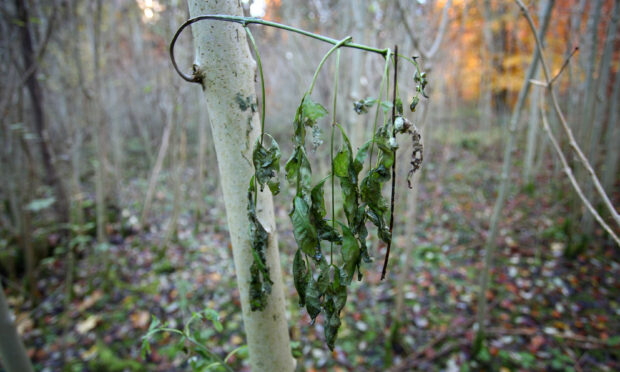Scientists have made a “large first step” in efforts to tackle ash dieback by identifying the first UK tree with very high tolerance to the disease.
Chalara ash dieback, which could kill millions of ash trees, was first identified in the UK in 2012 and experts fear it could have the same devastating impact on the country’s woodlands and landscape as Dutch elm disease in the 1970s.
But a team of researchers from the UK, Denmark and Norway have identified genetic markers in ash trees which are tolerant to the disease, raising hopes of selective breeding to produce trees which are less susceptible to the ash dieback fungus.
The collaboration saw the scientists assess 182 ash trees in Denmark, which had been badly hit by Chalara, scoring them for visual signs of disease and then conducting a genetic analysis.
The scientists found three genetic markers in the trees that were associated with disease tolerance, which they tested on a separate group of Danish trees to see how well they predicted whether the trees would be less susceptible.
They then screened trees in the UK to predict if they were likely to be mildly or strongly tolerant to ash dieback.
A tree, nicknamed “Betty”, in a Norfolk Wildlife Trust woodland where there were a high number of infected trees ,was predicted by the markers to show a very high tolerance to the disease.
Betty is a mature tree which is currently healthy, despite being next to trees which are infected.
Initial screening of several small UK populations has also indicated that the markers for tolerance may be more common in UK ash trees compared to other parts of Europe.
Professor Allan Downie, Emeritus Fellow at the John Innes Centre and coordinator of the Nornex consortium which carried out the research, said: “The identification of genetic markers for trees with low susceptibility to ash dieback is a large first step, one of many that will be needed in the fight to help ash trees survive this disease epidemic.”
He added it was “astonishing” the science had come so far in such a short time.
UK Chief Plant Health Officer, Nicola Spence, said: “This unprecedented work conducted by British scientists has uncovered an exciting development in tree health.
“It paves the way for tackling this destructive disease and will help ensure that Britain’s stock of ash trees, and its countryside, remains resilient against pests and disease in the future.”
The research was funded by the Department for Environment, Food and Rural Affairs (Defra) and the Biotechnology and Biological Sciences Research Council (BBSRC).
Defra Lords spokesman Lord Gardiner said: “We want to guarantee the graceful ash tree continues to have a place in our environment for centuries to come, and this vital work is a major step towards ensuring just that.”










